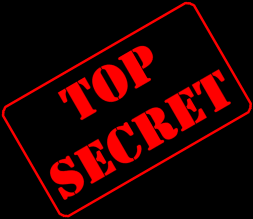White House Visitor Records Closed

WASHINGTON (AP) -- The White House and the Secret Service quietly signed an agreement last spring in the midst of the Jack Abramoff lobbying scandal declaring that records identifying visitors to the White House are not open to the public.
The Bush administration didn't reveal the existence of the memorandum of understanding until last fall. The White House is using it to deal with a legal problem on a separate front, a ruling by a federal judge ordering the production of Secret Service logs identifying visitors to the office of Vice President Dick Cheney.
In a federal appeals court filing three weeks ago, the administration's lawyers used the memo in a legal argument aimed at overturning the judge's ruling. The Washington Post is suing for access to the Secret Service logs.
The five-page document dated May 17 declares that all entry and exit data on White House visitors belongs to the White House as presidential records rather than to the Secret Service as agency records. Therefore, the agreement states, the material is not subject to public disclosure under the Freedom of Information Act.
In the past, Secret Service logs have revealed the comings and goings of various White House visitors, including Monica Lewinsky and Clinton campaign donor Denise Rich, the wife of fugitive financier Marc Rich, who received a pardon in the closing hours of the Clinton administration.
The memo last spring was signed by the White House and Secret Service the day after a Washington-based group asked a federal judge to impose sanctions on the Secret Service in a dispute over White House visitor logs for Abramoff.
The chief counsel to another Washington-based group suing to get Secret Service logs calls the creation of the memo ''a political maneuver couched as a legal one.''
''It appears the White House is actually manufacturing evidence to further its own agenda,'' Anne Weismann, a Justice Department lawyer for 19 years and now chief counsel to Citizens for Responsibility and Ethics in Washington, said Friday.
The White House and the Secret Service declined to comment.
Last year in the Abramoff scandal, the Bush administration, in response to three lawsuits, provided an incomplete picture of how many visits Abramoff and his lobbying team made to the White House.
The task of digging out Abramoff-White House links fell to a House committee that collected the lobbyist's billing records and e-mails. The House report found 485 lobbying contacts with presidential aides over three years, including 10 with top Bush administration aide Karl Rove.
As part of its security function of protecting the White House complex, the Secret Service uses the log information to conduct background checks on people prior to daily appointments and visits.
The memorandum of understanding is an unusual step because it deals with an unsettled area of law.
Federal courts will ultimately decide whether records identifying White House visitors and who they are going to see are under the legal control of the Secret Service or are presidential records publicly releasable solely at the discretion of the White House.
The Bush administration's agreement with the Secret Service ''at a minimum will serve to postpone a final resolution of who these records belong to,'' said Steven Aftergood, director of the Project on Government Secrecy for the Federation of American Scientists. ''This memo reflects the Bush administration's view of American government, which is that the people's business should be conducted behind closed doors.''
In the mid-1990s, a conservative group, Judicial Watch, obtained Secret Service entry logs through a lawsuit.
Secret Service records played a significant role in the Whitewater scandal in the 1990s, supplying congressional Republicans with leads to follow in their investigations of the Clintons.
A decade ago, Senate investigators used Secret Service logs to document who visited the White House during the fundraising scandal surrounding President Clinton's re-election campaign.







0 Comments:
Post a Comment
<< Home